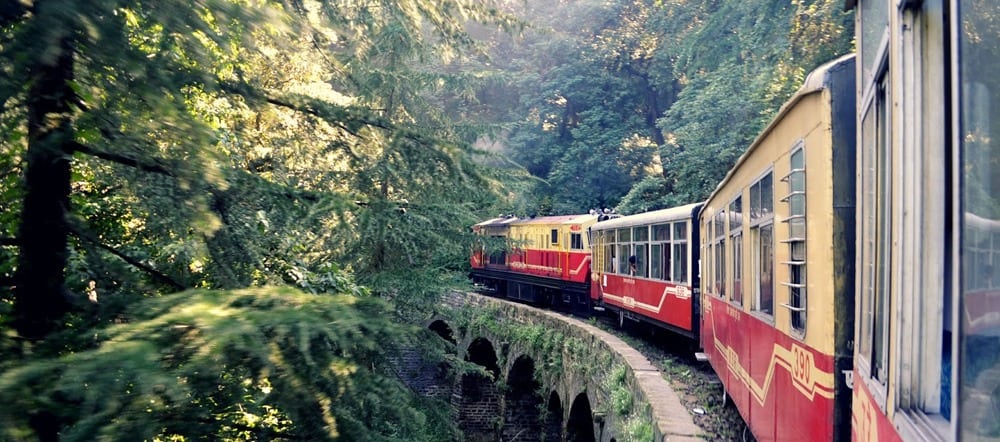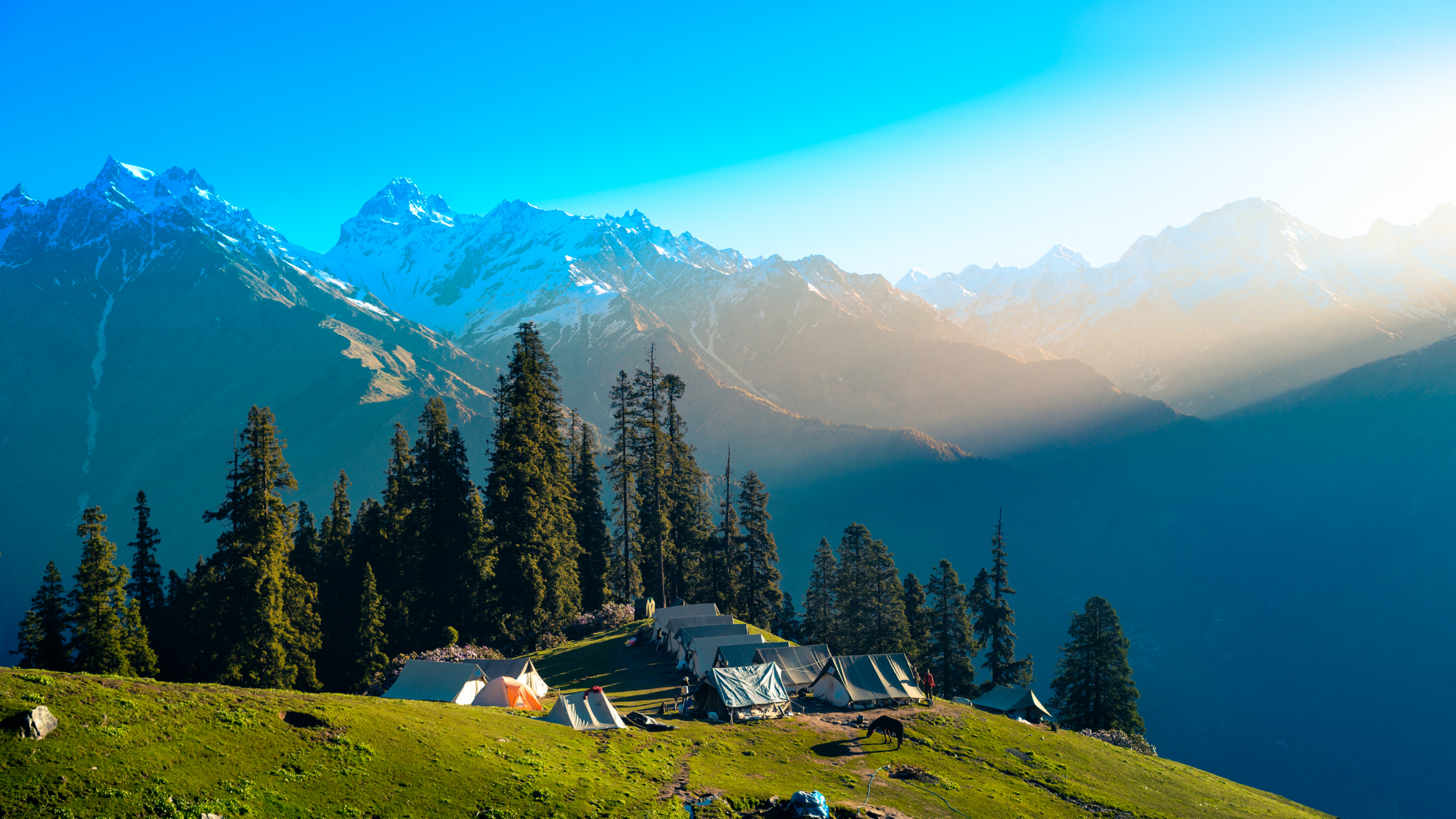Himachal Pradesh
Himachal Pradesh
Best Himachal Tour Package in India
Capital: Shimla
Location: Northern India
Language: Hindi, Punjabi, Pahari, Kanashi
Best Time to Visit Himachal Pradesh: April to October and December to January
Major Towns: Shimla, Manali, Dharamsala, MacLeod Ganj, Spiti, Dalhousie, Solan, Pathankot, Kasauli, Mandi, Nahan, Nalagarh, Una, Pragpur, Jawalaji, Palampur, Bhagsu, Sarahan, Rampur
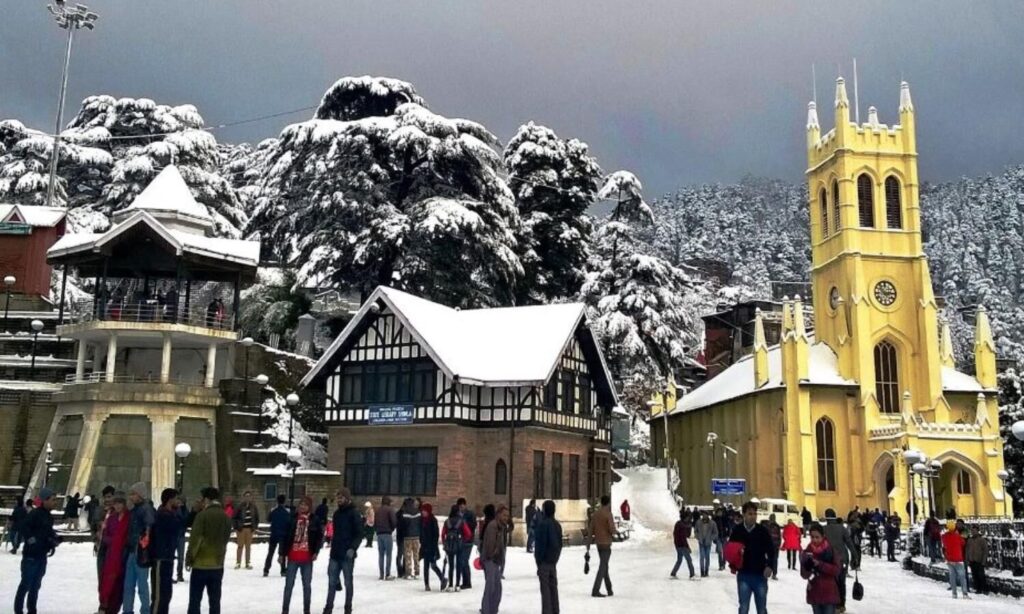
What to See in Himachal Pradesh: Religious places, fairs and festivals, apple farms, colonial mansions, cricket ground, museums, monasteries, royal palaces.
A land of splendid mountains, a pristine place which feeds and provides solace to the mind and soul, a pious land which is associated with the supernatural, an enigma of a place which attracts people from every nook and corner of the world- It’s incredible, it’s beautiful, its enchanting- It’s Himachal!
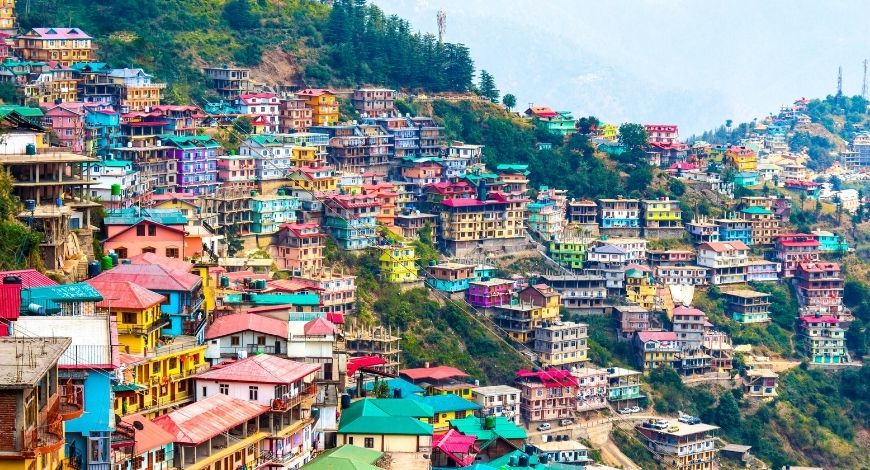
Himachal Pradesh is a magical place where the sun sets in paradise. Reorganized as the 18th Indian state in 1971, Himachal is located in the north-western region of the Himalaya. Himachal is landlocked between Jammu and Kashmir to the north, Tibetan plateau to the west, and Punjab to the east; the state stands apart in terms of its sheer topographic diversity and breathtaking pristine natural beauty. It is said that the land possesses such magnetism that it attracts nature lovers and voyagers from not only India but across the globe.
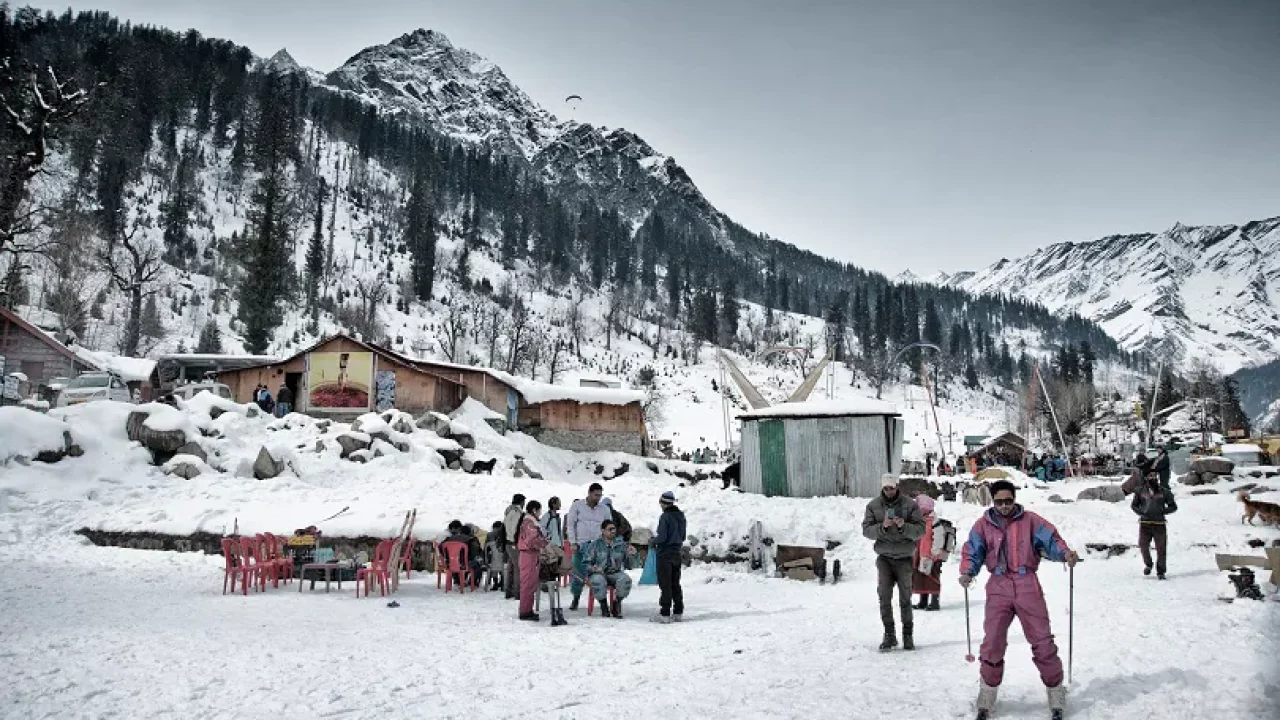
Himachal possesses a unique charisma! Truly a traveller’s paradise, Himachal has everything which can fascinate a tourist. Mighty snow peaks, deep gorges, lush green and golden valleys, flower filled meadows, misty woods, fast flowing icy rivers, glaciers, gushing water streams, steep waterfalls, enchanting lakes, rippling streams are a few manifestations of its unparalleled beauty.
McLeodGanj in Himachal Pradesh is the abode of the 14th Dalai Lama, Tenzin Gyatso. The diverse side of the state is easily evident from its cities and the stories associated with them. If the stories about Malana can spellbind the tourists then the barren terrain of Lahaul & Spiti can set them in heaven. On one side there are the picturesque valleys of Kullu, Kinnaur and Kangra then on the other side there are scenic cliff-hangings, dangerous roads of Kinnaur. While one can see riots of culture and colour in Dharamsala and McLeod Ganj, then there are colonial hamlets in Dalhousie.
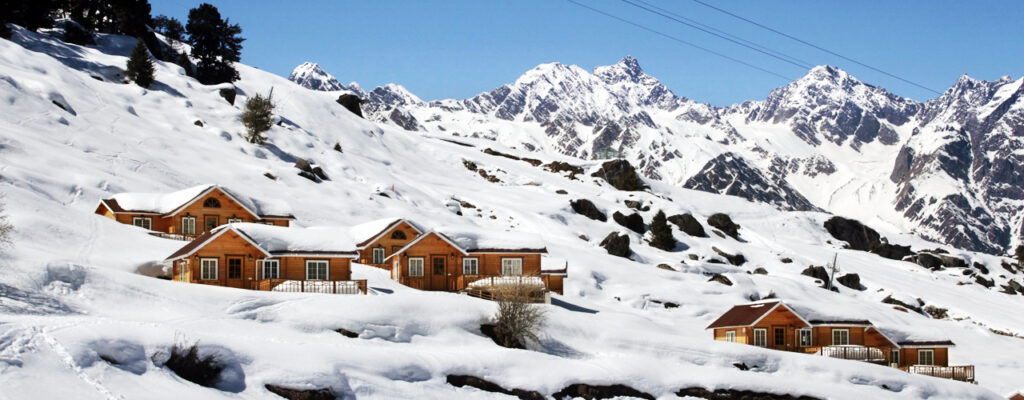
Himachal has plenty to offer the tourists who are looking for local handicrafts to take home. Stroll around the markets or mall roads and purchase Tibetan carpets and handicrafts, shawls, preserves and pickles, toys, wooden articles, semi precious jewellery and baskets.
A tour to Himachal, which is set amidst the lush green carpet of manicured trees with 360 degree view of Himalaya, is always relaxing and rejuvenating. Some of the best places to visit in Himachal Pradesh are Shimla, Narkanda, Chail, Tattapani, Kasauli, Naldehra, Barog, Solan, Kullu, Manali, Naggar, Manikaran, Mandi, Joginder Nagar, Keylong, Chamba, Kangra, and Nahan.

Each time, you’ll love it more
For the true traveler, there’s more to Himachal than just Shimla, Kufri, Narkanda, Naldera and Chail . The inner beauty of Kinnaur, for instance, is beyond belief. A most splendid valley, it is surrounded on one side by Tibet with the Satluj River meandering through its slopes & gorges. The lifestyle & culture over here is predominantly influenced by the Tibetan ways of life & religion. The region is dotted with Buddhist gompas & monasteries. Men, women & Children of Kinnaur are innocently simple, nubile & very very hospitable. Kinnaur – the land of legends & mythical richness beckons you to experience the spirit of exhilaration & nature’s wealth of beauty.

The Seductive Charms of Sangla Valley
It will bedazzle you. The Sangla Valley, at a height of 2700 meters, embedded like a jewel in Kinnaur District, is hardly 210 kms from Shimla and barely 70 kms from the Tibetan Border. The most exciting thing about Sangla is the clear & close view of the Himalayan Peaks in their pristine glory visible from here. The valley abounds in an amazing variety of flora, fauna, fruits, flowers & cider trees. Its picturesque villages will win your hearts & so will the Kinnaur inhabitants. Worth a view is the 800 years Old Kamru Fort in Sangla.
SANGLA, KANDA-DAMBAR, KANDA- VALLEY OF FLOWERS
If you are planning a holiday in Sangla and wish to throw in a bit of exercise and adventure, this short trek is ideal for you. This way, you can savour the beauty of the pastures of Sangla Kanda without the exertion of the Rupin Pass trek. Enjoy the Kanda over the afternoon after climbing up from Sangla. Spend the night at (or near) the Trekker’s Hut here and climb north-west the next day to cross the Shivaling Pass back toward the Baspa Valley Once across, stroll down to the trekking hut at Damabar, the pasture of Chansu Village. If time is not at a premium, spend another night watching the moon over Raldang Peak, due north across the Baspa Valley. From Dambar take to Chansu Village and Ruttrang Bridge, to reach the motor road 3 km below Sangla
Rakcham
If you are in Sangla and not visiting Rakcham, then you are missing out on something very important. This picturesque spot is located between Sangla and Chitkul and is also the second-last village before the Tibet border. Pronounced as “Rakshyam” by the locals, the Rakcham village is blessed with many beautiful gardens, snow-clad mountain ranges, and lush green trees. The natural sights of this place are so amazing that tourists can’t resist visiting here. Many people prefer to trek through this village till Chitkul to enjoy the natural beauty that this place is blessed with.
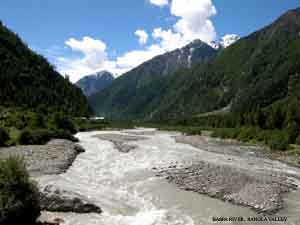
Highlights
Rakcham is a small village with several lodges and hotels and many apple gardens that add to the beauty of the place. It is nestled between the mighty snow covered peaks and a lush green landscape and looks like an absolute heaven on earth. Rakcham lies at an altitude of 2900 meters and is relatively unknown for many people. Still a good number of people visit this scenic spot, which has a population of approximately 800 people.
The people of Rakcham migrate every six months during winter to lower altitudes and return during April to sow seeds and tend to crops. This village seems to be a place from the past as there are no newspapers, no post office, no internet, no police station, no wine shop, no market-just a couple of shops selling very basic necessities. However, the place is blessed with crops, abundant water, and natural beauty, and is surrounded by lovely people.
There are two temples in the village i.e. Kali and Shiva and a Buddhist shrine, which reflects the rich culture of Tibetan people. Throughout the region, one will find a typical blend of Hindu and Buddhist ideology. Reaching Rakcham is easy as it is well-connected to major cities like Shimla and Delhi, so next time you are planning your holiday to Sangla Valley, don’t forget to visit Rakcham.
Chitkul Cool and captivating
Nestling almost at the end of Sangla valley is the pastoral village of Chitkul, at an altitude of 3450 meters on the right bank of River Baspa. It exudes a fairy-tale romantic aura. Chitkul, you’ll be surprised to know, has a population of a little over 500 only.
HOW TO REACH
You would have to take the road route from Shimla to reach Sangla. From Shimla, Sangla is an 8 -9 hr drive (for first time drivers this time may be around 10 hrs).
From Chail/Shimla to Karcham (the turnoff point on NH 22) is 221/209kms. Please take a right turn at Karcham. And at around 18 kms down the road, you will hit Sangla.
Places to Visit Around
Sangla Meadows
Full day walk to the green pastures.
Rakcham
A beautiful 4 hr walk along the Baspa River to Rakcham village. The signature- walk of the valley.
Baspa River
This River flowing along the valley is great for trout fishing.
Batseri village
Just across the camp, this village is an excellent example of the great hill architecture. The local devta temple here is a must see.
Glacier
The glacier is just above Rakcham village. If you visit us in March, April and May, you will be able to hike up to glacier point and even play in the snow.
Mastrang pine forest
This is a lovely little stretch of woods where we sometimes camp overnight (for the more adventurous ones) and at other times, we stop here on the way back from Chitkul for picnic lunch.
Chitkul
Last border village on the Indo- Tibet border and only 3 kms short of the last border outpost civilians are allowed to. This is on the Hindustan-Tibet trade route which is no longer used.
Early morning walks
There are several early morning refreshing walks in the hills surrounding the camp.
Best Time to Visit.
15 th March to Dec.
Kalpa
Day excursion to Kalpa (50 kms/ 2 hrs drive on the way). Kalpa offers an unparalleled view of Kinner Kailash peak and is famous for its apple and chilgoza plantation.
March to January. However, temperatures vary with the seasons. May to September have pleasant days and cold nights while March, April & October have pleasant days and night temperature may dip to 2-3 degrees.
Kalpa A Picturesque Panorama
The journey to Kalpa is a colorful feast for one’s senses & sensibilities from Sangla which is only 51 kms away. The road to Kalpa passes through beautiful villages. Kalpa is surrounded by vineyards, which are protected from bears by large sheep-dogs. Visitors can buy Kinnauri Shawls & Caps, not forgetting excellent quality apples & chilgozas which grow aplenty here.
Best Time To Visit
March to Dec.
NAKO LAKE
Nako Lake is a high altitude lake in the Pooh sub-division of district Kinnaur. It forms part of the boundary of Nako village and seems that the village is half buried in the lake’s border. It is about 3,662 metres (12,014 ft) above sea level. The lake is surrounded by willow and poplar trees. Near the lake there are fourBuddhist temples. Near this place there is a footlike impression ascribed to the aint Padmasambhava. Several miles away there is a village called Tashigang around which there are several caves where it is believed that Guru Padmasambhava meditated and gave discourse to followers. There is a waterfall nearby which has snow water falling like a river of milk. Legend says that it is a heavenly realm of fairies. In one of the caves you are still able to see the live footprints of these fairies or other demigods. It is a sacred place for the people of these valleys. Followers come from as far a place as Ladhak and spiti valley.
TABO (3050 m): 163 km from Kalpa is the ancient village of Tabo, situated on the left bank of river Spiti. Flanked on either side by hills, it has one of the most important Buddhist monasteries regarded by many as only next to the Tholing Gompa in Tibet. It is also known as the Ajanta of the Himalayas. Tabo is the largest monastic complex of Spiti which has since been declared a protected monument under the aegis of Archaeological Survey of India.
Pin valley
17 km before kaza. Coming from the kinnaur. One notices a board proclaiming the:-
land of ibex & snow leopard
pin valley is formed by the pin river, which rises on the eastern slopes of pin parvati pass.
Pin valley is much more rugged and barren than the main spiti valley
Pin valley national park- land of ibex & snow leopard
The national park is situated in the cold desert of spiti valley, this valley also known as pin valley lies on the both sides of pin river, which joins spiti river on the right bank near dankar. There is a place known as attargo bridge. Which is about 25 km from tabo. By crossing this village, a metal road leads to the pin valley 30 km to Kungri village. This place is adjacent to the park. In this area visitors come across big herds of ibex & baral, snow leopard is also found in this park.
This area can be visited only by those who have tough leg muscles and strong lungs.
Pin valley is a protected area, with rupi bhabba wildlife sanctuary to its south. And the great himalayan national park to its southwest. Bara singri glacier forms part of the northern boundary of this park. Which continues along the hundungma ridge separating the spiti valley and pin valley watersheds. The eastern boundary runs along the killing nala to join the pine river near larang la.
Winter (jan. To march) is the critical period in the yearly cycle of the life of an ibex.
This is a period when all the vegetation is totally dry and coarse. And embedded in meters of snow. The only forge they can get. It forms the dangerous avalanche paths and patches where large shrubs, willows, and roses (rosa spp) occur. They may even dig in the snow where it forms a thin layer, to get access to some plants. This the period they suffer maximum mortality because of starvation and avalanches. This is especially so if the winter is unusually long.
Come spring with the sprouting of life – giving plants and the birth of a new generation of ibex, the cycle continues.
Mainly three villages around pin valley: kungri, sagnam & mud. General tourists can visit up to mud by car.
Where you stay: one or two guest houses, home stay in mud & sagnam & pwd rest house sagnam.
Height: 3800 mtrs.
Average population: 400
Season: May to oct.
Distance: from sangla or kalpa. 235 km via akpa, morang, spelo, khab, nako , tabo, from manali, 280 km, via rohtang, garampoo, chota dhara, batal, kunzum pass, losar, kaza
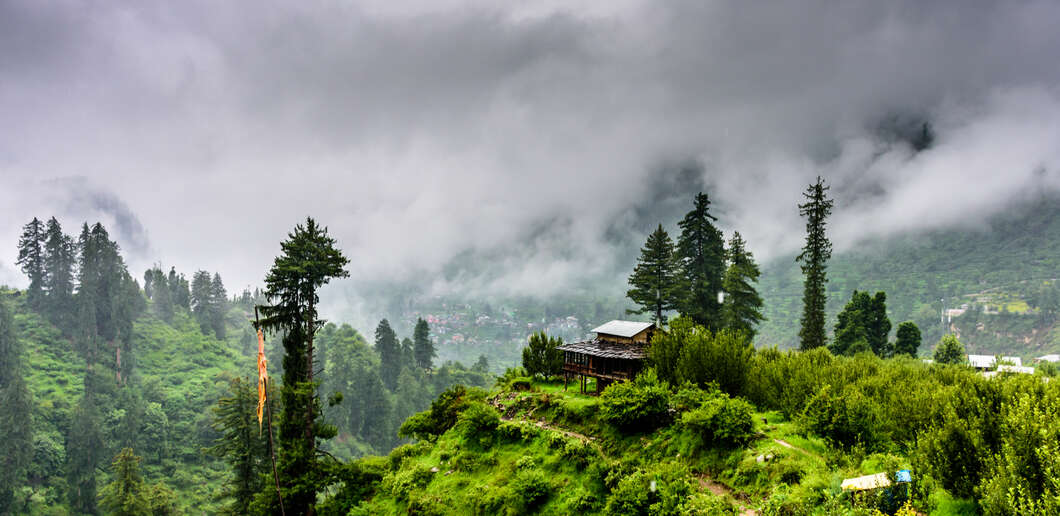
TREKKING ROUTE: FROM KAFNU (KINNAUR) TO MUD 6 DAYS
KUNZUM PASS (4551m) : 76 km. One of the highest motorable passes. Goddess Kunjum keeps guard over this pass and wards off evil.
CHANDERTAL LAKE (4270m) : 7 km from Kunzum Pass, is one of the most beautiful lakes in the entire Himalayan region. Surrounded by snow, this deep blue water lake has a circumference of 2.5 km. River Chandra flows very close to the lake.
IMPORTANT INFORMATION FOR INDIAN AND FOREIGN TOURISTS
The Kinnaur and Spiti area of Himachal Pradesh has been opened to Indian and Foreign tourists. While going via Shimla and Rampur – Kalpa, Recong Peo and Sangla Valley can be visited by Indians and Foreigners without any restrictions. To travel beyond Jangi in Kinnaur to Kaza in Spiti one requires an inner line permit for foreign nationals which can be obtained from the following offices:
District Magistrate – Shimla, Recong Peo (Kinnaur), Kullu, Keylong (Lahaul)
Sub District Magistrate (SDM) – Shimla, Rampur, Kalpa, Nichar, Keylong, Udaipur
Additional Deputy Commissioner Office in Pooh and Kaza.
The best place to get the permit is at Rampur and Reckong Peo. The office of the SDM at Rampur is just opposite the Police Station in the main bazaar and the office of the District Magistrate at Reckong Peo is near the bus station. The permit is free of cost and holds good for seven days. To get a permit, one must have a letter of introduction from a recognised travel agency, three passport size photos, and a photocopy of the front pages of the passport. Making several copies of the permit is suggested, as one may have to submit them at checkpoints on the way. Foreign nationals can travel with permits in a group of four or more persons. Foreign nationals cannot stay overnight between Jangi and Kaza.
Indian nationals do not require any permit to travel in this area however retaining a proof of identity is suggested.
